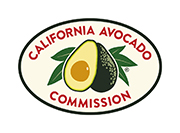Thrips and Wind Scarring on GEM Avocado Fruit – A Study on Two Locations in Ventura County Funded by the California Avocado Commission First Year Report
The objectives of this study are to determine if the scarring observed on young GEM avocado fruit is caused by wind or avocado thrips feeding and to determine if wind screens, insecticide applications, or organosilicon surfactants (e.g., Silwet®) can significantly reduce the scarring of young GEM avocado fruit.
Optimization of systemic pesticides for control of avocado thrips
CAC-funded Research Examines Avocado Thrips Management Options
Management and resistance monitoring of avocado thrips and persea mite
The current CAC project over the 5-year period 2007-2012 focused on continuing to monitor for avocado thrips and persea mite resistance to abamectin and on developing pesticides in other classes of chemistry that could be used in rotation with abamectin; efficacy data were generated to support registration and working with pest control advisors (PCAs), we began to evaluate the strengths and weaknesses of each of these new products.
Pest Management Guidelines for Agriculture: Avocado
These practices are recommended for a monitoring-based IPM program that enhances the use of IPM practices to reduce the risks of pesticides on the environment and human health. This year-round IPM program covers the major pests of avocados in California. Details on carrying out each practice, example monitoring forms, and information on additional pests can be found in the Avocado Pest Management Guidelines.
Surveying Avocados in the Baja Peninsula for Pests that May Enter California
Over the period 23-25 January 2011 residential areas in Tijuana Mexico were surveyed for the presence of avocado trees, and when possible trees were inspected for arthropods associated with trees. Google Earth was used to pre-select six separate residential areas that showed high levels of greenery (i.e., parks, and well maintained residential gardens). In these six areas, 267 residential street blocks were surveyed. From these blocks, a total of 634 properties were inspected from the road. The percentage of street blocks with avocados in pre-selected sections of Tijuana ranged from 23% to 45% of blocks having at least one tree. A total of 80 avocado trees were found from these surveys. Of surveyed properties, 10% or 64 properties had at least one avocado tree. The number of avocados per property ranged from 1 to 5 trees. The GPS coordinates were recorded for each tree and when possible foliage was inspected for avocado pests.
Are Thrips Important Pollinators of Avocados in California?
The importance of honey bees as pollinators of avocado flowers is a contentious issue. The reason for this is that there is no clear or consistent experimental evidence unequivocally demonstrating that honey bees are essential for pollinating avocado flowers and promoting maximum fruit set. While many different types of insects are known to visit avocado flowers (e.g., beetles and flies) and it is assumed that these insects play some role in pollination, their exact importance is not known.
- 1 of 2
- Load More


